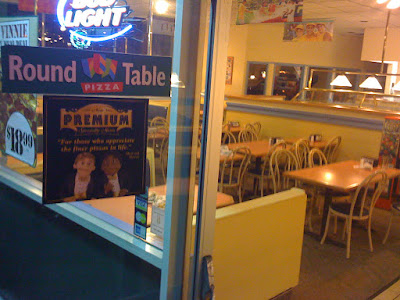
A few years back, Claire and I were in a Montréal museum and she noticed me excitedly shooting photos of a hat in a display case. "It's
Louis Riel's hat," I exclaimed. She drew a blank, as would most Americans.
Riel was a 19th Century revolutionary figure in Canada, who stood up for the rights of his people, the Métis, most of whom were of mixed French-"First Nations" ancestry. His activism helped form the province of Manitoba and advance the cause of French speakers outside of Québec. But his means -- including the support of armed insurrection -- caused him to be labled as a murderer in English-speaking Canada and his was hanged as a traitor (despite vehement protests in Québec) in 1885.
He was also just a little bit crazy. Either that or he actually
was on a mission from God. Take your pick.
I first learned of Riel in my study of Canada a few years back. Both Ferguson's
Canadian History for Dummies (actually a really good survey of our neighbors to the north) and Riendeau's dense
A Brief History of Canada treat Riel rather roughly. A few years back at Comic-Con, I was at the Eisner awards and noticed a Riel biography
was nominated for Best Graphic Album-Reprint. I decided to look for it and found it at a local library a couple weeks back.
Chester Brown's
Louis Riel: A Comic-Strip Biography is a good read, but admittedly takes liberties with the facts. Historical figures are shown at gatherings where they were not present, several characters are composited into one for simplicity's sake, scenes are dialogue are dramatized. In other words, it's much like the movie "24 Hour Party People," which I
reviewed earlier this week.
Below: Riel meets with Ulysses S. Grant, then goes nuts (because everyone knows there's no God in Washington D.C. ), in a two-page spread illustrating the typical six-panel layout of Brown's book. Click to enlarge.

Brown for the most part is sympathetic to Riel, showing him as being passionate about his cause, but indecisive and too willing to take bad advice. Despite the revisionism, the book is no
hagiography. As stated, Riel is often shown to make bad decisions and despite the style shown in the "religious experience" above, its clear that Brown thinks Riel had a screw loose.

What conservative Canadians might get upset about is the treatment of
John A. Macdonald, the Dominion's first prime minister. Now Macdonald is in no way as revered as, say, George Washington, he is certainly considered one of the
greatest Canadians. In Brown's book Macdonald is presented as a conniving drunkard, willing to let the Métis suffer if it suits his political goals (
right).
Brown offers an intriguing narrative, the simple line art is clean and easy to follow. The historical flow is easy to follow and the many, many characters are easy to keep straight. The story presents an intriguing political tragedy. But while I learned a lot about the
North-West Rebellion and Riel's role in it, I don't know if I really learned much about Riel himself. There is nothing in the book before Riel's formation of Manitoba and virtually nothing about the nearly 15 years he was exiled in the United States. It stretches things to call this book a "biography" when it only concentrates on specific events.
History is indeed written not only by the victors, but by those who actually choose to write it. Brown's "Louis Riel: A Comic-Strip Biography" helps remind us of that fact, while at the same time helping us debate if a little historical wiggle room is acceptable over forgetting the whole deal.












